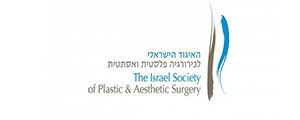VOLTAR
IMCAS World Congress 2019
IMCAS World Congress 2019
Programa
S003, S004
Rhinoplasty: experts' point of views (in collaboration with ISPAS)
Sala: Salle Paris (level 1)
Data: quinta-feira 31 janeiro 2019 de 10:30 às 12:30
Formato: BATALHA > duelos individuais sobre um tema atual, onde os palestrantes defendem suas técnicas e abordagens... apenas um lado vence!
Data: quinta-feira 31 janeiro 2019 de 10:30 às 12:30
Formato: BATALHA > duelos individuais sobre um tema atual, onde os palestrantes defendem suas técnicas e abordagens... apenas um lado vence!
Apresentações desta sessão
| Horas | Palestrantes | Título da apresentação | Resumo | Número |
| 10:30 | Presentation of ISPAS | Visualizar | 79349 | |
| 10:33 | Q1. Open or closed rhinoplasty? - Open | 79343 | ||
| 10:43 | Q1. Open or closed rhinoplasty? - Closed | 80349 | ||
| 10:53 | Conclusions: discussion with all speakers | 79431 | ||
| 11:03 | Q2. Do you always graft in primary rhinoplasty? No | Visualizar | 80355 | |
| 11:13 | Q2. Do you always graft in primary rhinoplasty? Yes | 80357 | ||
| 11:23 | Conclusions: discussion with all speakers | 79441 | ||
| 11:33 | Q3. Middle third: to preserve or to rebuild and how? | 80361 | ||
| 11:43 | Q3. Middle third: to preserve or to rebuild and how? - Preserve | Visualizar | 80359 | |
| 11:53 | Conclusions: discussion with all speakers | 81821 | ||
| 12:03 | Q4. Mechanical or power assisted osteotomy? - Mechanical | 80351 | ||
| 12:13 | Q4. Mechanical or power assisted osteotomy? - Power assisted | 80353 | ||
| 12:23 | Conclusions: discussion with all speakers | 81823 | ||
















